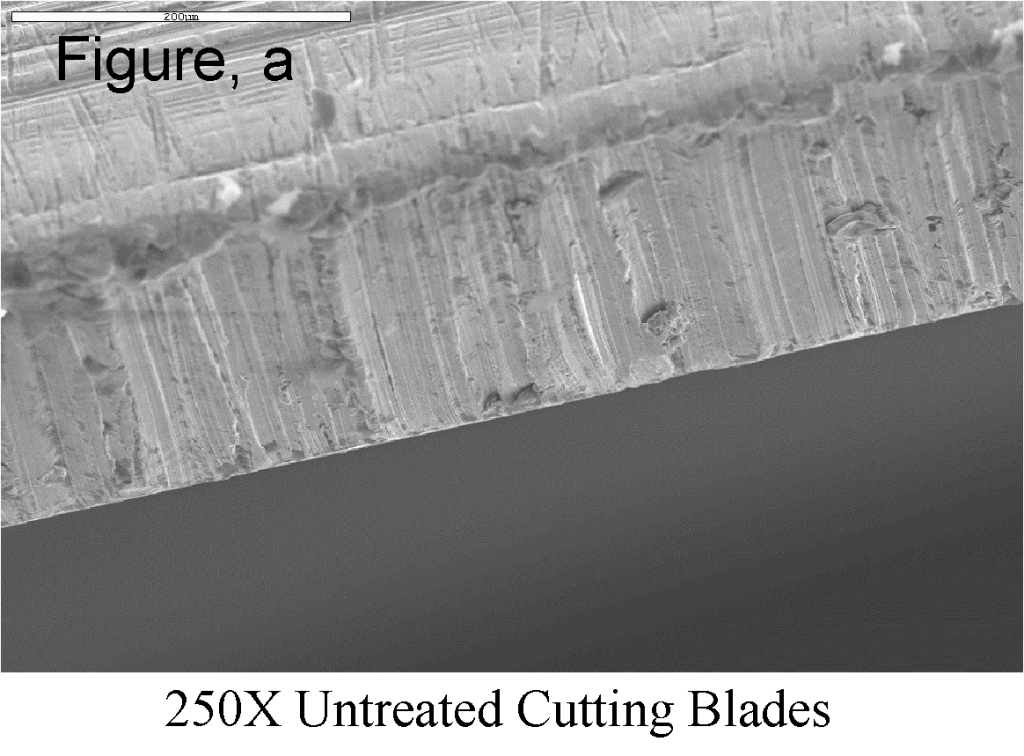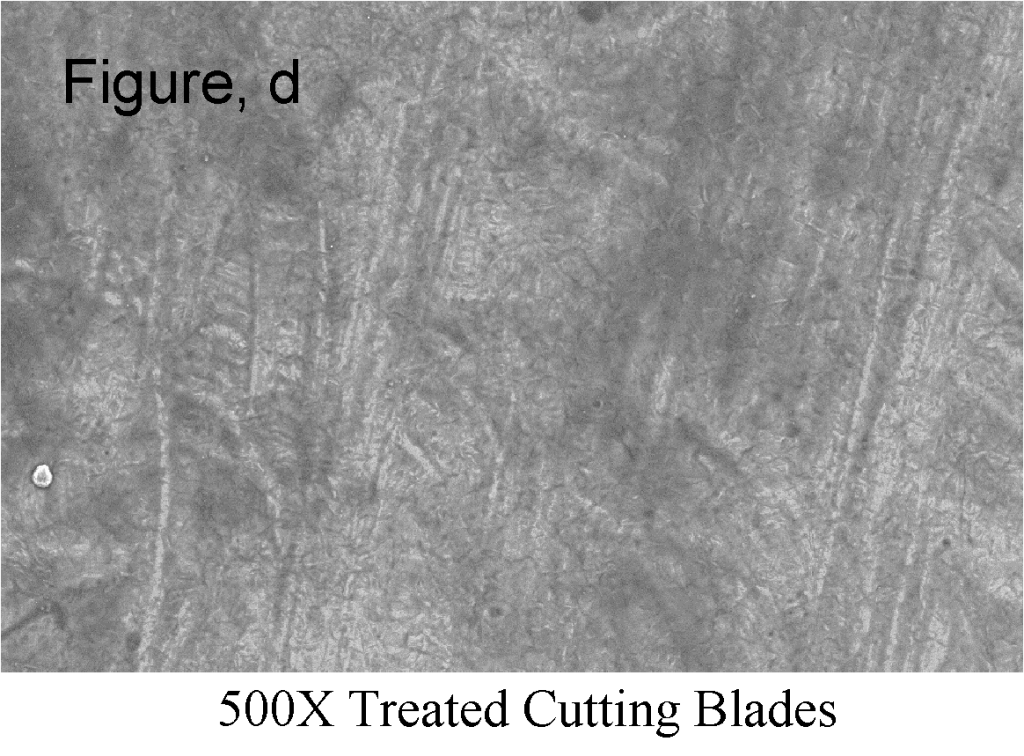Alpha-Omega Power Technologies (AOPT), through its high energy pulsed ion beam Surface Treatment process is enabling manufacturers to meet the growing performance requirements of a competitive marketplace – while at the same time increasing the value of the critical components they supply to their customers.
IBESTTM, a high-energy pulsed ion beam treatment process is demonstrating a broad range of customer benefits including both improved performance and lifetime extension of parts.
Ion Beam Surface Treatment (IBESTTM) Technology
IBESTTM technology, is a thermal process, uses very high energy, rapidly pulsed ion beams to melt the surface of a material to a depth of 5-10 microns. The bulk of the material, acting as a heat sink then cools the thin melted surface layer in less than a microsecond, (see Figure 1).

The IBEST process modifies and improves existing material surfaces by near-instantaneous melting and cooling of the existing material, not by adding coatings or diffusing chemicals into the surface. This difference enables IBEST to provide benefits that cannot be matched by any other capability.
The short processing time, a few seconds, which is an integral part of the IBEST treatment, makes IBEST technology cost effective compared to other, much slower surface treatment techniques. In marked contrast to many other material surface treatments, IBEST is chemical-free, produces no waste stream, and uses negligible consumable materials.
The result of the fast melting and cooling changes the surface characteristics of steels like H13, 17-4PH, O1 and M2 making them harder, with a very small grain size, resulting in improved corrosion, wear and fatigue properties. While some tool and gear steels have reached a Rockwell hardness of more than HRC 70, other materials like 316 stainless steel and aluminum alloys typically show significant increases in corrosion and wear resistance. Other materials like ceramics and plastics have also shown potential for improvement by IBEST.
Powder Metallurgy Applications
Power metallurgy, and especially a rapidly growing market segment of PM called Metal Injection Molding (MIM), is becoming widely used to fabricate small, complex, high precision parts without the high cost of machining. Improved surface finish and density are important in this industry. IBESTTM has demonstrated that it can smooth and densify Metal Injection Molded (MIM) surfaces and also provide increased hardness in some cases.


Electrical Discharge Machining
Some companies have shown interest in smoothing both mechanical and EDM (Electrical Discharge Machined) machining marks on a die surface. Figure 2a and b show the ability of the IBEST treatment to smooth an H13 EDM surface.


M2 Material
IBEST treatment of M2 material has shown an increase in hardness of more than 50% on the Knoop scale shown in figure 3, representing a Rockwell hardness of more than 70.

Fig.3. Hardness of M2 steel comparing untreated material with the results of two different IBEST treatment approaches.




O1 Material
O1 tool steels are found in many applications from dies and knife blades to die cutting and general industry use. Figure 5 is a cross-sectional view of IBEST treated O1 tool steel with a clearly defined melt region of approximately 5-8 micron depth.

The melt region shows the absence of clearly defined carbides evident in the bulk material, having been kept in solid phase solution due to the rapid cooling process. Analysis by transmission electron microscopy revealed 20-nm grain size, a dramatic reduction from the original structure.
Other demonstrated treatment capabilities and benefits include:
- Lifetime Extension of Carbide and High Alloy Steel Tools
Treatment of carbide tools using IBESTTM– has shown improved smoothness, and in customer tests has provided significant lifetime extension of tools cutting aluminum and cast iron. Cutting blades have been made harder and smoother.
- Corrosion and Fatigue Resistance
In tests by a turbine manufacturer, IBEST-processed, uncoated, 17-4PH stainless steel, forged turbine blades showed no corrosion in customer conducted 1000 hour salt spray test. Tests conducted by a QMT vendor/partner using titanium alloy compressor blades demonstrated that IBEST processing significantly increased both fatigue and erosion resistance.
- Healing of Surface Cracks
Tests of IBESTTM-processed gear material for a leading automotive supplier showed that IBESTTM processing can eliminate surface cracks in carburized materials to a depth of approximately 10 microns.
- Surface Preparation for Coatings
IBESTTM has demonstrated its ability to prepare surfaces for subsequent coatings by cleaning, melting, and homogenizing surfaces while removing inclusions, cracks, or other defects that could lead to coating failure. In addition, IBESTTM has shown that it can remove unwanted coatings or surface layers while preserving precise dimensions of the underlying material.
Customized IBEST Processing
AOPT offers customers access to IBEST treatment for both process development and parts treatment at it’s commercial Surface Treatment Center in Albuquerque New Mexico. As part of its service to customers, AOPT has developed process recipes, including optimized treatment levels, numbers of pulses and other proprietary treatment conditions that provide specific benefits for more than 20 different materials as shown below.
Material Demonstrated Benefit
All metals creation of fine grain (<150 nm) crystal structure
1045 and 1060 carbon steel hardness, smoothness, homogeneity, wear
304, 316, stainless steels improved corrosion resistance
15-5PH, CRES 320 improved corrosion resistance
17-4-PH stainless steel corrosion resistance, hardness, smoothness
440A, 440C martensitic steel improved wear, lubricity, and hardness
8620 gear steel crack healing, homogenization
M2 tool steel hardening, smoothing
M7 and M42 tool steel smoothing, homogenization
O-1 tool steel hardening, wear resistance
H13 tool steel hardening, wear resistance
80%Fe-20%B smoothing, amorphous structure
Ti-6-4 smoothing, fatigue and erosion resistance
Al 2024, 6061 corrosion resistance and wear
Cemented tungsten carbide smoothing, and wear resistance
Powder metallurgy parts smoothing, surface sealing, hardening
Polycarbonate improved adhesion
Surface Treatment Center
The first commercial IBEST system, shown in Figure 6 below,

Now commercially treating customer parts, (Figure 7), this technology promises to provide unique solutions to customer’s surface treatment needs.

Technical Support Capability
In addition to surface treatment services and equipment, AOPT can provide a complete spectrum of analysis surface techniques to meet customer needs.
For additional information please contact:
Ray Cravey, President
Alpha-Omega Power Technologies, LLC.
8504 Calle Alameda NE
Albuquerque, NM 87113
Phone, (505) 341-4828
e-mail: cravey@alphaomegapt.com